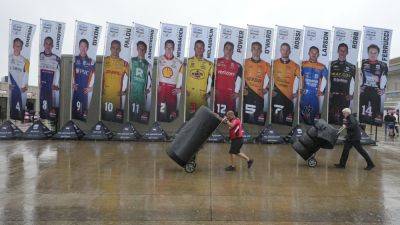We Tried the World’s Most Expensive Racing Simulator
A lot can happen in 150 milliseconds. Light will have traveled around the Earth’s equator (and then some). A honeybee’s wing will have flapped 30 times. The M13B pulsar located in the constellation of Hercules will have rotated more than 42 times. All this in the blink of an eye—which, incidentally, also takes about 150 milliseconds.
Milliseconds are also crucial in the world of racing simulators. Why? In order for any simulator to do its job well, it needs to seem as real as possible, as convincing as it can be. Latency—the delay between something happening and the person “driving” being told it is happening—is the enemy of racing simulators as it destroys the illusion of realism.
Now, most good home-racing sims—even high-end, luxury ones like the stunning Prodrive (designed by Ian Callum, formerly the director of design at Jaguar, no less)—have a latency of around 50 milliseconds or more. This sounds pretty good, but by adding these 50 milliseconds to the reaction time of an average F1 driver (200 milliseconds), you increase reaction time by 25 percent.
Furthermore, the disconnect that those initial 50 milliseconds has on the driving experience—however slight—is detectable by the brain, which is one of the main reasons why driving a racing sim, while certainly entertaining, normally doesn’t ever come close to the real thing.
This is where Dynisma enters the race. Based on the outskirts of Bristol, in the west of England, Dynisma was founded in 2017 by former McLaren and Ferrari Formula 1 engineer and simulator expert Ash Warne—not just for improving racing simulation, but also to service the increasingly key role that sims are playing in road-car development for an industry that spends spends £7 billion (around $8.8 billion) a year on physical prototypes. Better sims means fewer prototypes means saving money.







